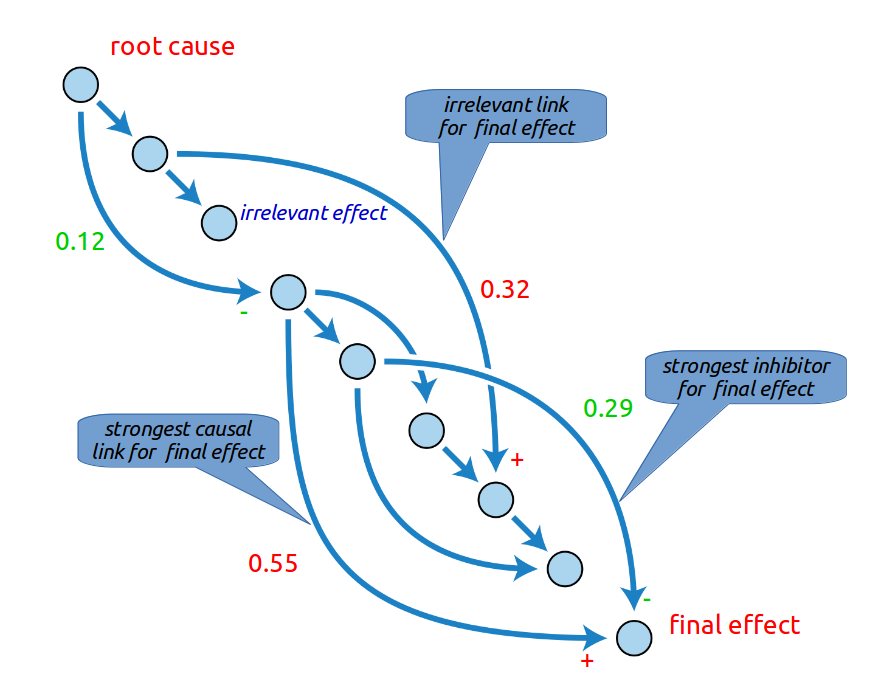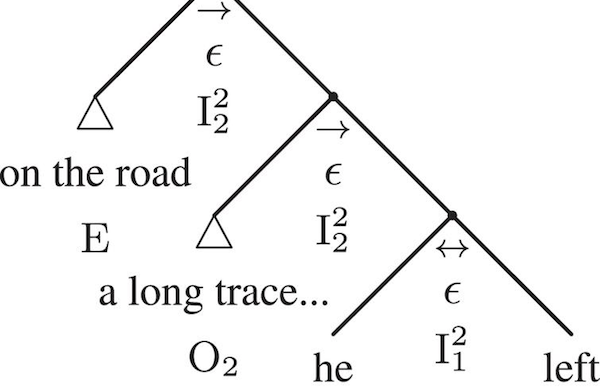“Development of Western Science is based on two great achievements: the invention of the formal logical system…by the Greek philosophers, and the discovery [during the Renaissance] of the possibility to find out causal relationships by systematic experiment.”
Albert Einstein (1953)

A casual graph picture
The Periodic Table of Arguments
The Periodic Table of Arguments (PTA) is a comprehensive overview of the techniques people use to persuade others of their point of view (Wagemans 2016, 2017, 2019b). The table is inspired by the classical disciplines dialectic (the art of philosophical debate) and rhetoric (the art of public speaking). It modernizes their traditional descriptions of argument schemes, fallacies, and other means of persuasion by unifying them in an overarching argument classification framework. Read more…

The Alpha quadrant.
Adpositional Argumentation
Federico Gobbo and Marco Benini, the founders of Constructive Adpositional Grammars (CAG), have teamed up with Jean Wagemans in order to develop a high precision tool for representing the linguistic and pragmatic features of arguments. The combination of their linguistic representation framework with the argument classification framework of the Periodic Table of Arguments (PTA) has yielded a method for building so-called ‘argumentative adpositional trees’ (‘arg-adtrees’). These enable the analyst of argumentative discourse not only to represent statements on the morphosyntactic level, but also to include information regarding the argumentative function of their constituents.
- Read the short paper Adpositional Argumentation (AdArg)
- Scholars interested in AI and Computational Argumentation are invited to read A method for reconstructing first-order arguments in natural language
- A somewhat less technical paper about the method is Building argumentative adpositional trees
Annotated corpus of argument schemes
Jacky Visser, John Lawrence, and Chris Reed of ARG-tech, the Centre for Argument Technology of the University of Dundee, are collaborating with Jean Wagemans for the purpose of developing an annotated corpus of argument schemes by combining Inference Anchoring Theory (IAT) with the Periodic Table of Arguments (PTA).
- The corpus is now available online at Corpus
- Read the paper An annotated corpus of argument schemes in US election debates
Rhetoric-checking
José Plug and Jean Wagemans are working on developing procedures for what they call ‘rhetoric-checking’, a practice that extends that of fact-checking with an assessment of the quality of argumentative aspects of discourse. Together with Martijn Demollin and Barend Last, they plan on launching a website for rhetoric-checking with student-generated content.
- Read the abstract of the paper From fact-checking to rhetoric-checking

The theory of Causality
Ordinary and scientific language is replete with causal claims, even when sentences do not use explicitly the words ‘cause’, ‘effect’, and their respective verbs. Even though the very concept of causation has undergone hard attacks, in the beginning of the 20th Century – notably by Russell in philosophy, Mach in physics, and Pearson in statistics – it is just a matter of fact that causal reasoning and causal discovery have not ceased to exist. With ups and downs, philosophy has revived debates on the notion of causation too. In particular, in the past decades, the philosophy of causality developed a rich battery of concepts, notions, and accounts of causation. Read more…

